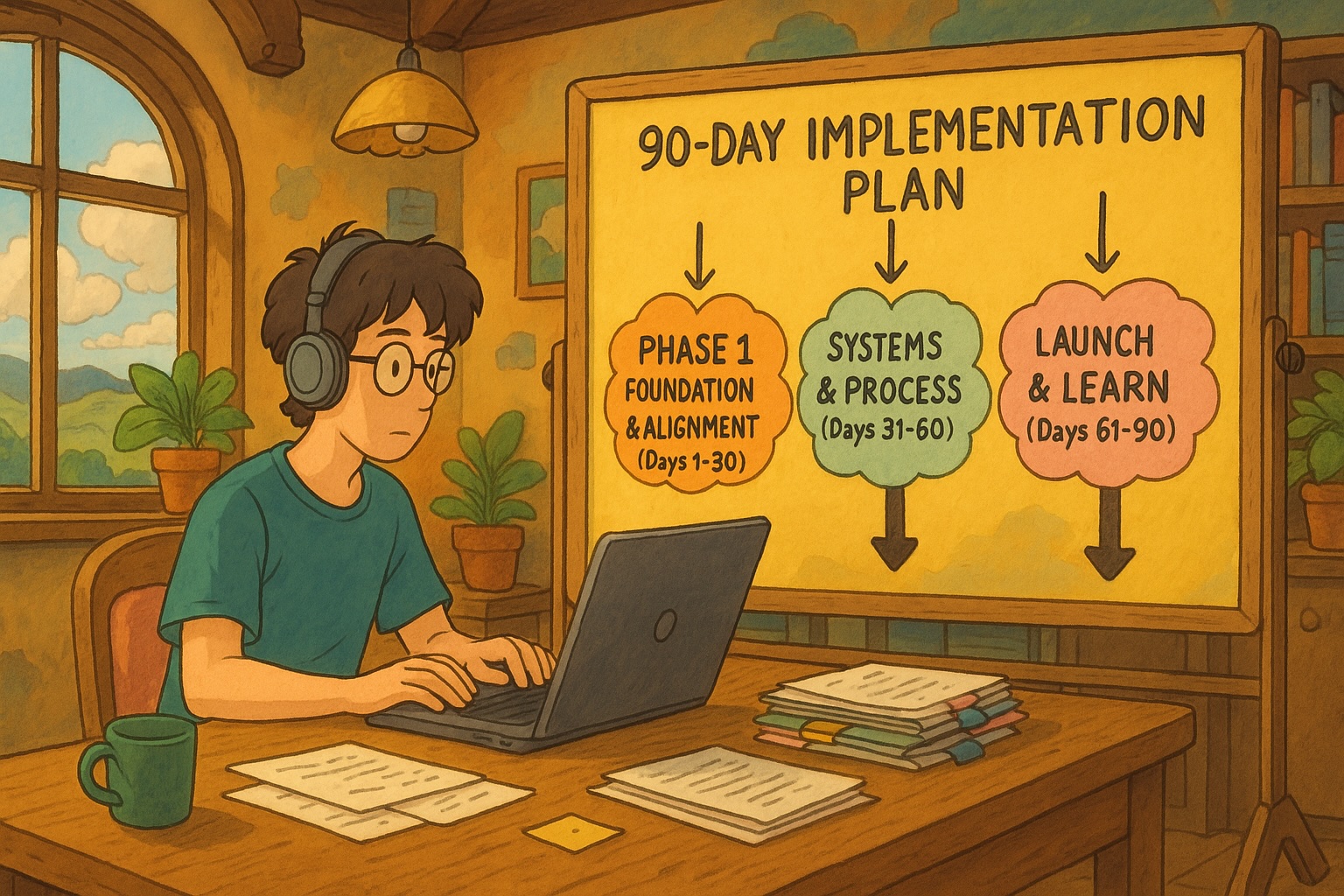
In Part 1 of this series, we established the financial case for the Strategic Experimentation Fund (SEF). You learned why traditional AI budgeting is broken and saw the portfolio model that successful technology leaders use to de-risk innovation.
Now, it's time to build it.
This article is your step-by-step, 90-day playbook to turn that strategy into a reality. It's a precise, tactical plan designed to take you from concept to a fully operational SEF in one business quarter.
We'll cover the three phases of implementation:
Your first month is about gathering evidence, building your coalition, and designing the core structure of your fund. You must get this foundation right before you proceed.
Before proposing a new model, you need a data-backed case explaining why the current approach is failing.
Define the specific financial structure for your SEF based on your organization's context and risk appetite.
This is the small, cross-functional group that will govern the fund. It must have the authority to make real Go/Kill decisions.
With your foundation in place, it’s time to build the operational engine. This phase is about creating the specific, transparent rules that will govern how experiments are funded, evaluated, and terminated.
The heart of your playbook is the stage-gate criteria. For each stage, you must define the exact questions it needs to answer to earn more funding.
You must be able to identify and track risks in a structured way.
Create an AI Risk Taxonomy. Your risks will fall into several categories:
Develop a Risk Register. Use a standardized template for every experiment to document, assess, and track risks from day one.
The final phase is about putting your new process into action. Momentum is the goal here, not perfection.
Your goal: Select 5-8 initial experiments to run through your new process. This is large enough to generate meaningful learnings but small enough to manage.
This is your opportunity to demonstrate the discipline of the SEF model. If an experiment fails to meet its predefined criteria, you must make the "kill" decision.
"Celebrating an early, cheap termination as a 'smart business decision' is one of the most powerful ways to solidify the SEF culture."
Use the experience from this first cohort to gather feedback and refine the process. Continuous improvement is baked into the SEF model.
To get buy-in, you must frame the SEF in a way that resonates with each stakeholder's priorities.
The Frame: "This is a disciplined R&D model that treats experimental spend like purchasing financial options—we cap our downside on any single bet while preserving massive upside on the winners."
Key Messages:
The Frame: "Given the high failure rate of AI projects, this governance model reduces our enterprise risk while ensuring we don't fall behind competitors."
Key Messages:
The Frame: "The SEF creates a protected space for real innovation, with the freedom to experiment and the safety to fail fast without blame."
Key Messages:
You now have the tactical playbook to launch your SEF. This framework provides the structure, but success depends on execution discipline and a commitment to continuous improvement.
Your homework before reading Part 3 is to take one potential AI project and draft a charter for it.
This exercise will make the process tangible and prepare you for a successful launch.
With your SEF implemented, you are ready to evolve it into an actual engine for competitive advantage.
Read Part 3: Your Guide to SEF Mastery and Advanced Scaling →
Part 2: Related Resources
More insights from the best-practices category
Get the latest articles on AI automation, industry trends, and practical implementation strategies delivered to your inbox.
Discover how Xomatic's custom AI solutions can help your organization achieve similar results. Our team of experts is ready to help you implement the automation strategies discussed in this article.
Schedule a Consultation